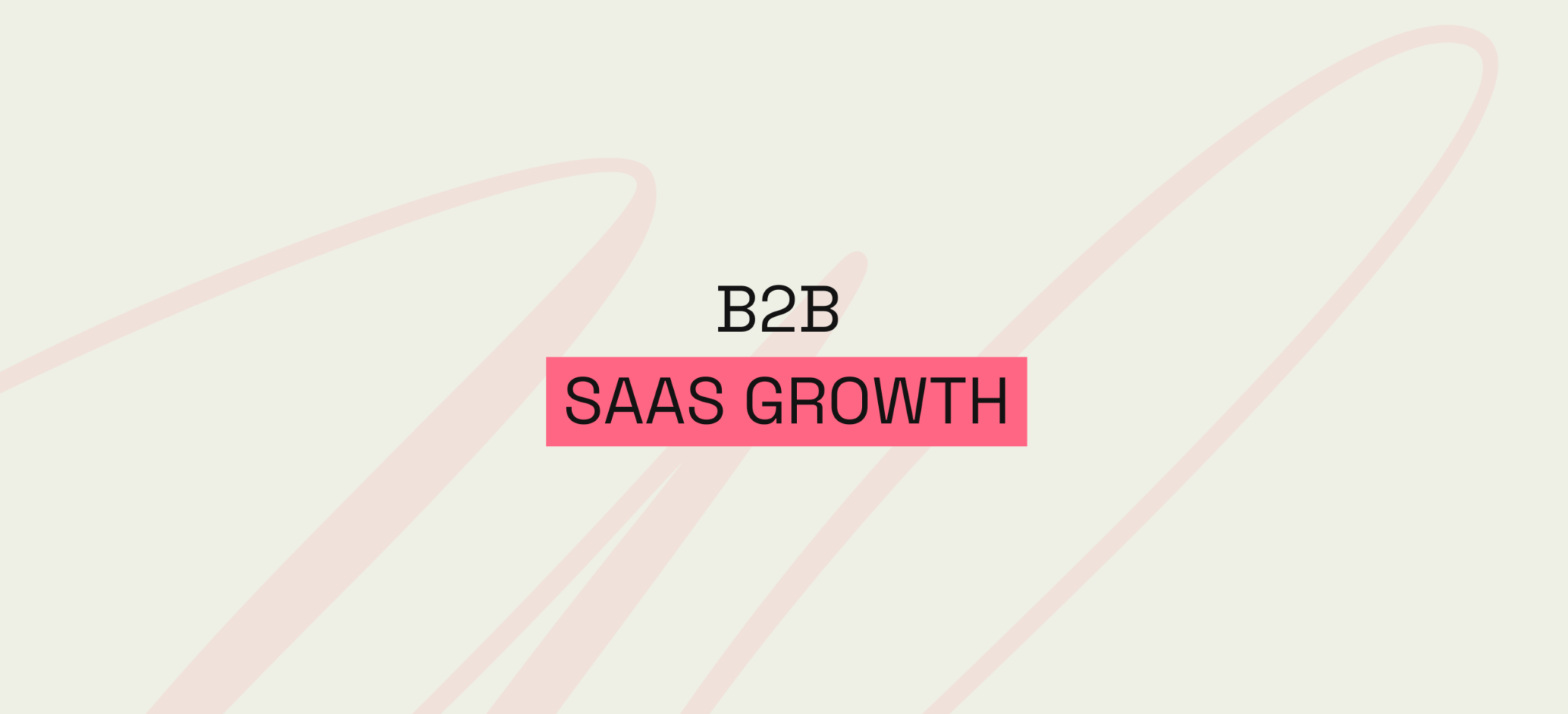
B2B SaaS Growth Strategy: Insights for Achieving Sustainable Expansion
Launching a B2B SaaS product is often just the first leg of a marathon. Once your solution is on the market, the question becomes how to scale effectively while maintaining a solid customer base and consistent revenue streams. A well-thought-out B2B SaaS Growth Strategy can be the difference between stalling out and achieving long-term success. From refining your ideal customer profile to implementing robust marketing automation, each element must come together to create a seamless customer journey.
Knowing Your Ideal Customer Profile (ICP)
Central to any B2B SaaS Growth Strategy is a clear understanding of who you’re selling to. Defining an Ideal Customer Profile (ICP) helps you tailor both your product and marketing efforts to target organizations that can benefit the most from your solution. HubSpot’s analytics suite simplifies this process by allowing you to capture firmographic data—such as company size, industry, and revenue—that you can then use to segment leads effectively.
For instance, one of HubSpot’s case studies highlights a SaaS enterprise that refined its ICP after noticing higher conversion rates among mid-market tech firms compared to smaller startups. By doubling down on that segment, they streamlined their sales and marketing efforts, improving conversion rates by nearly 30%. This underscores the power of precise targeting—if you know who values your service, you can focus your resources to yield better returns.
Aligning Marketing and Sales
In a B2B environment, the relationship between marketing and sales teams is crucial. Disjointed efforts can lead to confusion, missed opportunities, and a leaky funnel. A powerful CRM system like HubSpot acts as a unifying platform where both departments can share insights, track lead interactions, and manage deal pipelines. When these teams align around a common set of goals and metrics, your B2B SaaS Growth Strategy gains efficiency and momentum.
Your marketing campaigns should prime leads with the information they need to make confident purchasing decisions. By the time they reach your sales team, they should already have a strong understanding of how your SaaS solves their pain points. Detailed contact records in HubSpot help sales reps pick up the conversation without missing a beat, creating a smoother buyer experience. If your marketing team notices a sudden increase in interest from a specific vertical—say, healthcare—they can instantly relay this to sales, who can then tailor their outreach accordingly.
The Role of Automation and Personalization
Automation can be a game-changer in your B2B SaaS Growth Strategy, especially when combined with personalization. HubSpot allows you to set up automated workflows that nurture leads through email sequences, educational webinars, and personalized follow-ups based on behavior triggers. This helps keep potential customers engaged until they’re ready to speak with a salesperson.
Yet, automation must be used judiciously. Over-automation without personalization can leave prospects feeling like they’re being spammed. Balance is key. By leveraging HubSpot’s personalization tokens and segmentation features, you can address recipients by name, reference their company, and even tailor content to their industry or role. The result? Higher engagement rates and a more positive perception of your brand.
Leveraging Case Studies and Customer Stories
One of the most persuasive elements in any B2B SaaS Growth Strategy is social proof. Potential buyers want to see real-world examples of how similar companies have successfully adopted your solution. HubSpot itself is known for showcasing detailed case studies that illustrate ROI, user adoption rates, and specific metrics that improved after implementation.
You can replicate this approach by gathering testimonials and case studies from your own happy customers. Focus on metrics that matter to B2B buyers, such as cost savings, productivity gains, or revenue uplift. Once collected, these stories can be integrated into your marketing and sales materials. Not only do they provide credibility, but they also help prospects visualize how your solution could solve their challenges.
Pricing and Monetization in B2B SaaS
Pricing in the B2B SaaS realm often revolves around tiered subscriptions, with varying levels of functionality and service. Some companies also incorporate usage-based or per-seat pricing models. Determining which model is best for you requires careful market analysis and a deep understanding of your cost structure. HubSpot’s reporting dashboards can track user engagement to inform whether certain features should be included in higher tiers or offered as add-ons.
Experimenting with different models can be part of your B2B SaaS Growth Strategy, but it’s essential to monitor the impact on churn and customer satisfaction. A sudden price hike without added value can lead to negative sentiment. Conversely, a well-executed upsell strategy—supported by thorough onboarding and customer success resources—can enhance retention and revenue per account.
Customer Success: The Backbone of Retention
In the B2B space, acquiring a customer can be a lengthy and expensive process. That’s why retaining existing customers is just as vital as acquiring new ones. A robust customer success program ensures that your clients continue to see value from your solution, reducing churn and enabling upsell opportunities. Many SaaS companies use HubSpot’s customer feedback tools—like NPS surveys—to identify potential churn risks early and address them before it’s too late.
Customer success isn’t only reactive; it’s proactive. Regular check-ins, training sessions, and access to a dedicated customer success manager can turn a neutral account into a brand advocate. Make sure your customer success team has the data they need, whether from HubSpot or other integrated tools, to understand usage patterns and address issues promptly. Over time, satisfied customers often become your most powerful marketing asset, referring new business and participating in case studies.
Continual Optimization and Future Planning
A successful B2B SaaS Growth Strategy is dynamic, continually evolving based on market changes, technological advances, and shifting customer demands. Frequent audits of your sales funnel can reveal bottlenecks that need attention. If you notice a drop-off in mid-funnel leads, for instance, you might need to adjust your content strategy or improve sales follow-up times. If certain features are underutilized, you could run campaigns to educate users on their benefits.
Keep an eye on emerging trends within your target industries. For instance, as companies look to consolidate their tech stacks, you might explore new API integrations with HubSpot to offer a more unified solution. 9H Digital specializes in crafting such integrations, ensuring seamless data flow and a frictionless user experience.
Designing a robust B2B SaaS Growth Strategy involves aligning your teams, understanding your ICP, leveraging automation wisely, and prioritizing customer success. Data-driven insights—especially those gleaned from a centralized platform like HubSpot—empower you to make informed decisions, optimize your funnel, and craft a compelling product narrative. Over time, these concerted efforts translate into sustainable expansion, strong customer loyalty, and an enhanced market presence.
Ready to elevate your B2B SaaS growth journey? Consider how HubSpot’s analytics, automation, and CRM features can power each stage of your funnel. If you’re looking for specialized assistance or need custom API integrations to align with your unique growth goals, 9H Digital is here to help. Get in touch with Ale, our HubSpot specialist at 9H Digital, and discover how you can unlock new opportunities for lasting success in the B2B SaaS world.
Similar articles you might be interested in

Boosting Average Revenue Per User (ARPU): Strategies for Your SaaS Business
“If you can sell a $5,000 product to 100 customers, why settle for selling a $50 product to 10,000?” That’s the ARPU mindset successful SaaS businesses adopt, focusing on maximizing the value of every customer instead of chasing sheer volume....

Strategies for Re-engaging Churned Customers: Turning Losses into Gains
In the world of SaaS (Software as a Service), success isn’t solely defined by the number of signups or the initial revenue — One of the most critical, and often misunderstood, metrics is Customer Lifetime Value (CLV or LTV). While...

Rebranding Your SaaS: A Comprehensive Guide to Transforming Your Business Identity
Freshdesk, a SaaS company that focuses on customer service solutions, had a big moment in 2017. Since Freshdesk offered more than just helpdesk services, the name “Freshdesk” no longer summed up the company’s main goal. The company changed its name...
